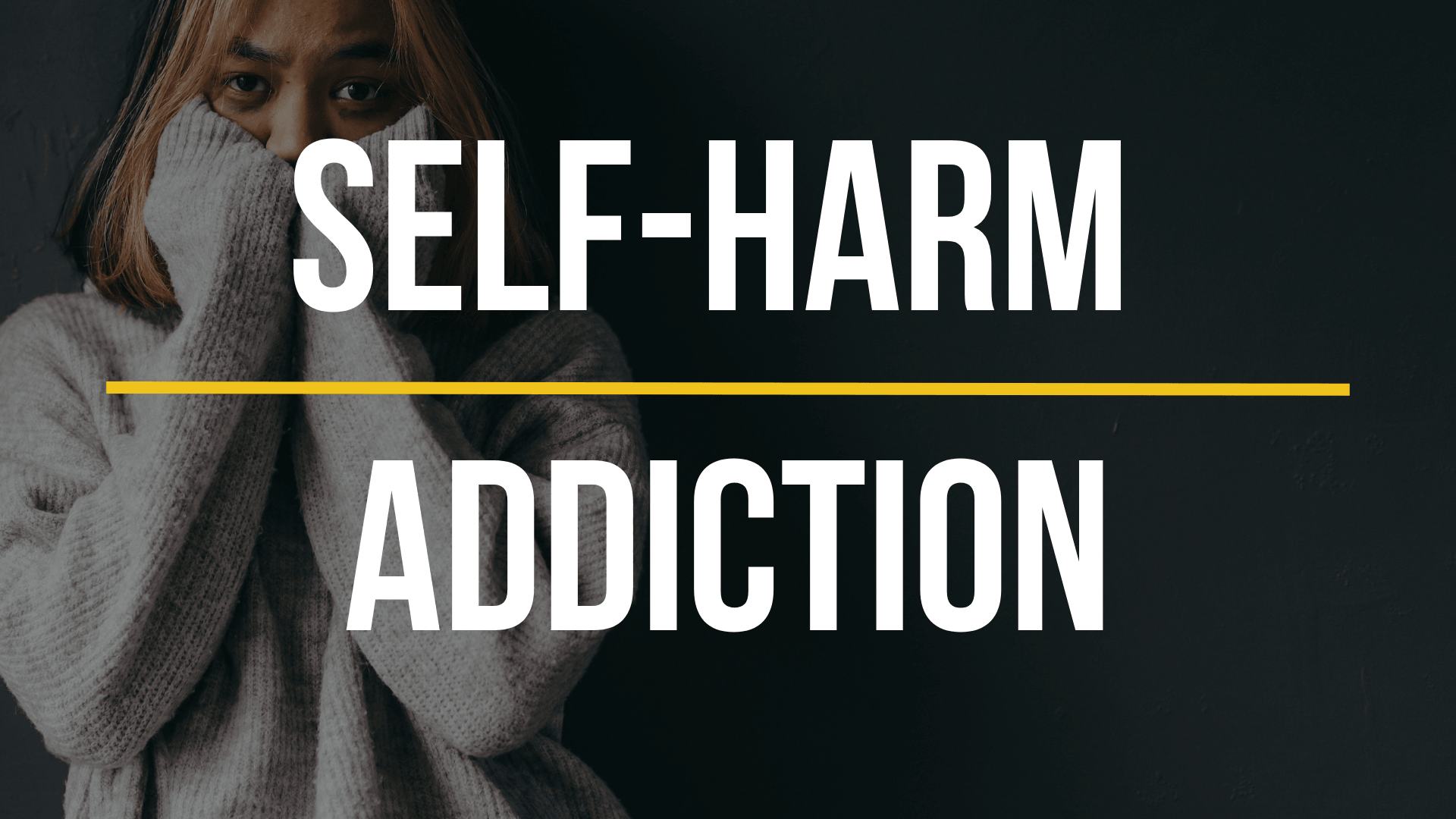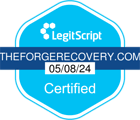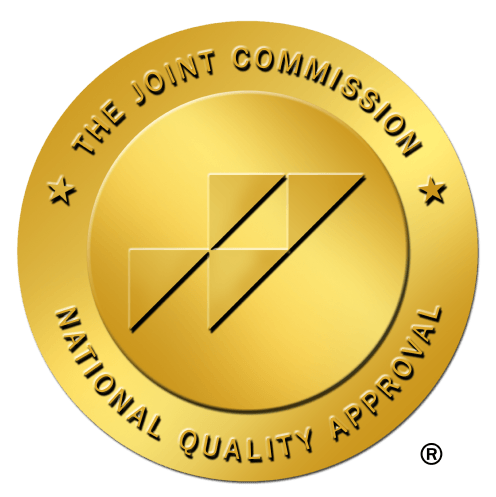What Is Self-Harm Addiction?


Self-harm addiction is a compulsive behavior, one that drives repeated self-injury to cope with emotional distress and requires compassionate support.
Self-harm addiction is a compulsive behavior where individuals repeatedly engage in self-injury to cope with emotional distress. While it doesn’t involve a physical dependence on a substance, the urge to self-harm can be managed with support and professional help.
Is Self-Harm an Addiction?
Self-harm is not classified as an addiction in the traditional sense, as it does not involve a physical dependence on a substance. However, self-harm can become a compulsive behavior that individuals may struggle to control, leading to a cycle of self-destructive actions similar to addiction.
Some researchers suggest that self-harm can be linked to addictive tendencies, as individuals may experience a sense of relief or temporary escape from emotional pain through self-harming behaviors. Seeking professional help and therapy is crucial in addressing underlying issues and finding healthier coping mechanisms to break the cycle of self-harm.
How Does Self-Harm Become an Addiction?
Self-harm addiction often has deep-rooted causes, with emotional triggers and underlying mental health disorders playing a significant role. These factors can create a cycle of relief and guilt, perpetuating the addictive nature of self-harm behaviors:
Emotional Triggers
Self-harm addiction often stems from emotional triggers, such as stress, trauma, or feelings of inadequacy. These triggers can lead individuals to resort to self-harm as a coping mechanism.
Individuals experiencing intense emotions may turn to self-harm as a way to manage overwhelming feelings. The temporary relief obtained from self-injury can create a cycle where individuals repeatedly engage in self-harm to cope with emotional distress.
Relief and Guilt Cycle
The cycle of relief and guilt plays a crucial role in reinforcing self-harm addiction. Initially, individuals may experience relief or a sense of control after engaging in self-harm. However, this is often followed by feelings of guilt or shame, which can intensify the urge to self-harm again.
Over time, the relief obtained from self-harm diminishes, leading individuals to escalate their behaviors in search of the same level of emotional release. This cycle perpetuates the addictive nature of self-harm and makes it challenging for individuals to break free from this harmful behavior.
Impact of Underlying Mental Health Issues
Underlying mental health issues, such as depression or anxiety, significantly contribute to the development of self-harm addiction. Individuals struggling with these conditions may use self-harm as a maladaptive coping mechanism to alleviate emotional pain or numb their feelings.
The presence of untreated mental health disorders can exacerbate the addictive pattern of self-harm. Without proper intervention and support for underlying mental health issues, individuals may continue to rely on self-harm as a way to manage their emotional struggles.
Are You Struggling with Mental Health or Addiction?
We Can Help. Call Us Now!
CALL: 877-839-1772
How Self-Harm Addiction Impacts Daily Life
Self-harm addiction can disrupt daily life in profound ways, affecting relationships, performance at work or school, and physical health. From strained connections to academic setbacks and physical consequences, the impact is far-reaching.
Disrupted Relationships
Concurrent self-harm issues can significantly disrupt personal relationships and social interactions. Individuals struggling with self-harm addiction may isolate themselves, leading to strained relationships with family, friends, and colleagues. The secrecy and shame associated with self-harm behaviors can create barriers to open communication and trust.
Self-harm addiction often results in alienation from loved ones. The need to conceal scars or injuries from self-harm can lead to avoidance of social gatherings or intimate relationships. This withdrawal can further deepen feelings of loneliness and exacerbate mental health struggles, perpetuating a cycle of self-harm as a coping mechanism.
Impact on Performance
The emotional distress stemming from concurrent self-harm issues can have detrimental effects on academic or work performance. Individuals grappling with self-harm addiction may find it challenging to concentrate, make decisions, or meet deadlines due to overwhelming thoughts and emotions. The constant preoccupation with self-harm urges can impede productivity and hinder success in educational or professional settings.
Academic setbacks are common among individuals battling self-harm addiction. The mental and emotional toll of self-harm behaviors can lead to missed classes, poor grades, and difficulty focusing on studies. Similarly, in the workplace, the repercussions of self-harm addiction may manifest as absenteeism, reduced efficiency, and strained relationships with coworkers.
Physical Health Consequences
Engaging in concurrent self-harm issues poses serious risks to physical health. The repetitive nature of self-injury behaviors can result in severe injuries, infections, and long-term damage to the body. Cuts, burns, or other forms of self-inflicted harm not only carry the immediate risk of infection but also leave lasting scars that serve as constant reminders of the individual's pain and struggles.
Physical health complications arising from self-harm practices extend beyond visible injuries. Chronic self-injury can lead to nerve damage, impaired mobility, and increased susceptibility to infections. Moreover, the use of non-sterile instruments or methods in self-harm behaviors heightens the risk of bloodborne diseases and other serious medical conditions.
Why Do People Self-Harm?
Self-harm is often a response to intense emotional pain, providing a temporary escape from overwhelming feelings. Individuals may turn to self-harm as a way to cope with internal turmoil and regain a sense of control over their bodies and emotions.
Emotional Release
Common reasons people self-harm revolve around the need for emotional release. Individuals struggling with psychological pain often turn to self-harm as a way to externalize and cope with their intense emotions. The act of causing physical harm allows them to momentarily distract themselves from overwhelming feelings.
Self-harm serves as an outlet for individuals to express internal turmoil through external actions. The physical pain inflicted provides a temporary relief from emotional distress, offering a tangible manifestation of their harmful urges. By focusing on the immediate sensation of pain, individuals can briefly escape from the weight of their emotions.
Desire for Control
The desire for control over one's body and emotions plays a significant role in self-harming behaviors. For many, engaging in self-harm is a way to regain a sense of power in situations where they feel helpless or overwhelmed. By inflicting pain on themselves, individuals perceive a level of control over their bodies and the ability to manage their feelings.
Self-harm becomes a coping mechanism for those struggling with poor coping skills and difficulty managing their emotions. The physical act of self-injury allows individuals to exert authority over their bodies when other aspects of their lives feel chaotic or uncontrollable. This sense of control offers a temporary respite from the internal turmoil they experience.
Influence of Past Trauma
Past trauma or abuse can significantly influence the development of self-harming behaviors. Individuals who have experienced traumatic events may resort to self-harm as a maladaptive coping strategy to deal with unresolved emotional pain. The physical pain inflicted through self-harm serves as a way to numb or distract themselves from the lingering effects of past trauma.
Traumatic experiences can leave lasting scars on an individual's psyche, leading to difficulties in regulating emotions and processing distressing memories. Self-harm may serve as a means of reenacting past traumas or exerting agency over painful memories. Addressing the underlying trauma is crucial in helping individuals break free from the cycle of self-harm.
Are You Struggling with Mental Health or Addiction?
We Can Help. Call Us Now!
CALL: 877-839-1772
What Is Considered Self-Harm?
Self-harm, a coping mechanism for emotional distress, encompasses various methods like cutting, burning, or substance abuse. Understanding the severity levels and implications is crucial for addressing this harmful behavior effectively.
Methods Used
Self-harm, also known as self-injury, involves intentionally causing oneself physical harm. This can include cutting, burning, hitting, or scratching one's body to cope with emotional pain.
Individuals may engage in self-harm to express distress or seek a sense of control over overwhelming emotions. It is crucial to differentiate between self-harm and suicidal behavior, where the former is often a coping mechanism rather than a direct intention to end one's life.
Common Methods
Cutting is one of the most prevalent forms of self-harm. It provides a temporary release from emotional pain by creating physical pain. Other methods include burning the skin, hitting oneself, or pulling out hair.
People may also engage in less visible forms of self-harm, such as excessive drinking or drug abuse. These behaviors can be equally damaging, and require urgent attention and intervention.
Severity Levels
Self-harm can range from mild behaviors, like scratching, to severe actions that result in serious injury. The severity often correlates with the individual's emotional distress and coping mechanisms.
Mild self-harm acts may serve as a temporary relief from emotional pain but can escalate if left unaddressed. Severe self-harm, such as deep cutting or burning, poses significant risks and requires immediate professional help.
Implications
The implications of self-harm vary depending on the individual's circumstances. While some individuals may engage in occasional self-harm as a coping mechanism, others may develop an addiction to these behaviors.
Long-term self-harm can lead to physical complications, scarring, infections, and even permanent damage to the body. It is essential for individuals struggling with self-harm to seek professional help to address underlying issues and develop healthier coping strategies.
Types of Self-Harm
Self-harm takes on many forms, not just the visible ones like cutting and burning. Substance abuse and eating disorders are less apparent but equally harmful ways individuals cope with emotional pain, affecting both mental and physical well-being.
Physical Forms
Self-harm manifests in various physical forms, with cutting and burning being the most common methods. Individuals engage in these acts to cope with emotional pain or trauma.
Some individuals resort to cutting as a way to release emotional distress. This involves using sharp objects to make cuts on their skin, providing a sense of relief or control over overwhelming emotions.
Non-Physical Forms
Less visible forms of self-harm include substance abuse and eating disorders. These behaviors may not leave physical scars but can have severe long-term consequences on one's mental and physical health.
Substance abuse, such as excessive drinking or drug use, can be a form of self-harm where individuals numb their emotional pain through external substances. Similarly, eating disorders like bulimia or anorexia are ways individuals harm themselves internally.
Are You Struggling with Mental Health or Addiction?
We Can Help. Call Us Now!
CALL: 877-839-1772
Self-Harm Prevalence
Self-harm does not discriminate based on age or gender. It is prevalent across various demographics, impacting individuals from different backgrounds.
Among adolescents, self-harm is particularly common, with young adults often struggling to cope with the pressures of school, relationships, and identity formation. The stress of transitioning into adulthood can trigger self-harming behaviors as a coping mechanism.
While self-harm affects individuals of all genders, studies have shown that females tend to engage in self-harming behaviors more frequently than males. This gender difference may be attributed to societal expectations, body image issues, and emotional expression norms.
How to Stop an Addiction to Self-Harm
Treatment for Self-Harm Addiction
Therapeutic approaches, like cognitive-behavioral therapy (CBT), are effective in addressing self-harm addiction. CBT helps individuals identify triggers and develop healthier coping strategies. This therapy focuses on changing negative thought patterns and behaviors related to self-harm. Support from mental health professionals is crucial in guiding individuals towards recovery.
Support groups play a vital role in the journey to overcoming self-harm addiction. Community resources provide a safe space for individuals to share their experiences and receive encouragement. Peer support fosters a sense of belonging and understanding, reducing feelings of isolation. Being part of a supportive community can significantly impact an individual's recovery process.
Developing healthier coping mechanisms is essential in breaking the cycle of self-harm addiction. Learning alternative ways to manage emotions and stress is key to long-term recovery. Strategies such as mindfulness, journaling, exercise, and creative outlets can help individuals express their emotions in a healthy manner. Engaging in activities that bring joy and fulfillment can shift focus away from self-harming behaviors.
Are You Struggling with Mental Health or Addiction?
We Can Help. Call Us Now!
CALL: 877-839-1772
Closing Thoughts on Self-Harm Addiction
Self-harm addiction, though not a traditional addiction, shares many characteristics with addictive behaviors, including the cycle of relief and guilt and the impact of underlying mental health issues. It can significantly disrupt daily life, affecting relationships, performance, and physical health.
If you or a loved one are struggling to stop self-harming, help is available. At The Forge Recovery Center, our team of mental health experts is ready to assist you, offering a range of therapies to guide your journey toward mental wellness. Call us today to learn more and take the first step towards recovery.
Are You Struggling with Mental Health or Addiction?
We Can Help. Call Us Now!
CALL: 877-839-1772





